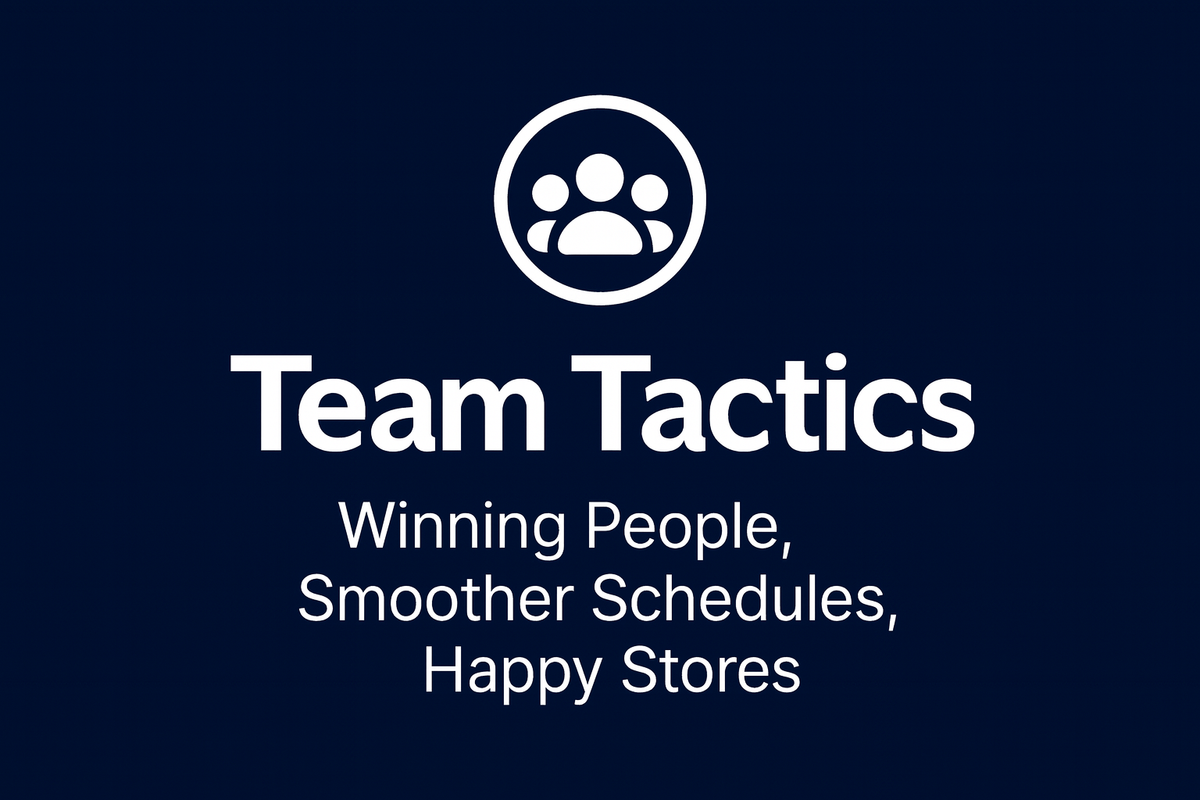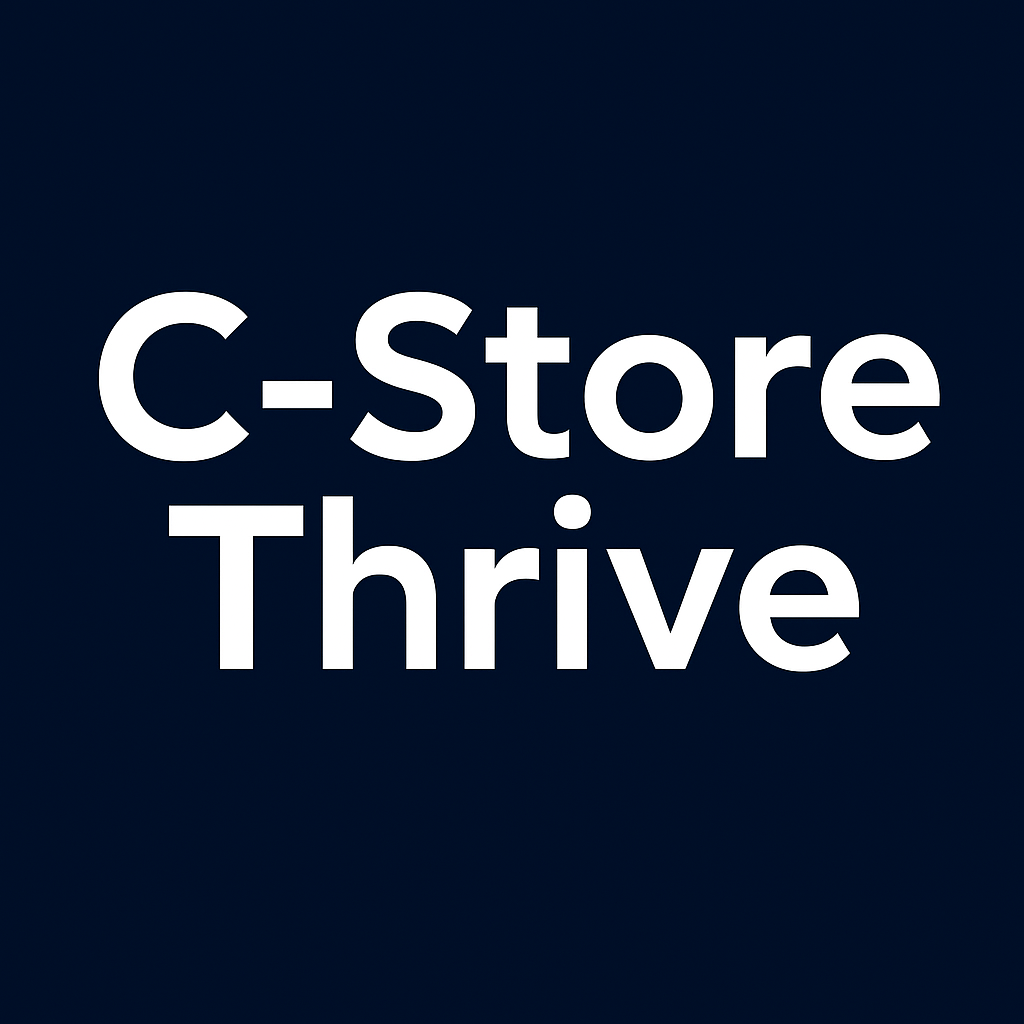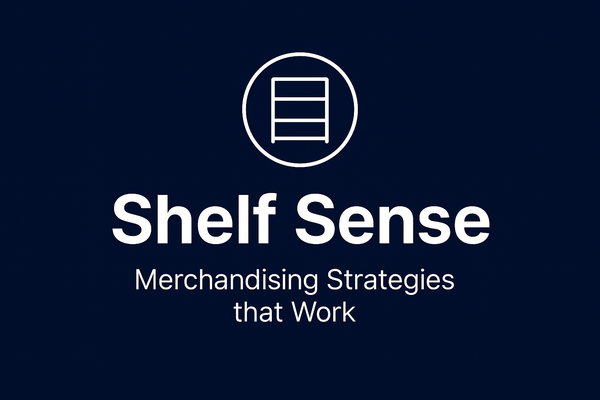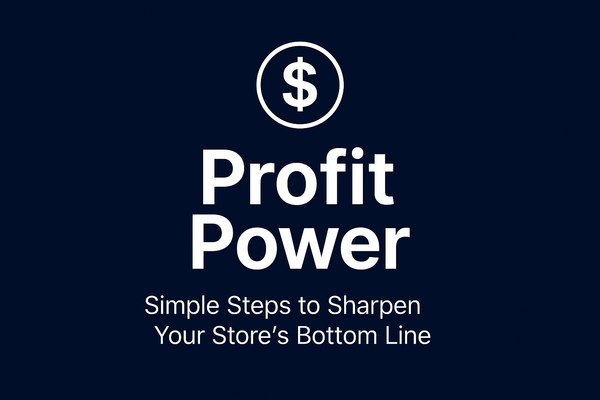Defining Core Values That Resonate with Frontline Teams
Core values aren't just wall decorations—they determine employee retention and customer loyalty. Stores with employee-resonant values report 25% lower turnover and 22% higher profitability. Independent operators can create authentic values addressing frontline realities unlike corporate chains.

For independent convenience store owners, core values aren't just words on the wall—they're the foundation that determines whether employees stay or leave, whether customers return or go elsewhere, and whether your business thrives or merely survives. But here's the challenge: values that sound impressive in corporate boardrooms often fall flat with frontline teams who deal with demanding customers, tight schedules, and the daily realities of retail work.
The convenience store industry faces a stark reality: average annual turnover rates of 130-146% mean that most stores completely replace their entire workforce every eight to ten months. Yet stores with clearly defined, employee-resonant values consistently report 25% lower turnover rates and 22% higher profitability than their competitors. The difference isn't budget or location—it's the authentic connection between stated values and daily employee experience.
Independent operators possess a unique advantage in values development: unlike chains constrained by corporate messaging, independent stores can create values that genuinely reflect their owners' beliefs and directly address their frontline teams' needs and motivations. When done correctly, these values become powerful tools for employee engagement, customer service excellence, and sustainable business growth.
Understanding What Frontline Teams Actually Value
The Reality of Frontline Work in Convenience Stores
Convenience store employees face unique challenges that make traditional corporate values feel disconnected from their daily reality:
High-Pressure Environment: Customers expect speed and accuracy during busy periods while employees juggle multiple tasks simultaneously
Emotional Labor: Dealing with difficult customers, de-escalating conflicts, and maintaining positive attitudes despite challenging situations
Physical Demands: Long hours on feet, lifting inventory, maintaining store cleanliness, and handling food service operations
Safety Concerns: Working alone during overnight shifts, handling cash, and managing security risks
Limited Career Visibility: Unclear advancement paths and development opportunities in an industry often viewed as transitional employment
What Research Reveals About Frontline Motivations
The NACS/Coca-Cola Retailing Research Council study of over 20,000 convenience store employees identified key factors that drive engagement and retention:
Work-Life Balance (56% priority): Flexible scheduling, predictable hours, and respect for personal time
Fair Compensation (54% priority): Competitive wages that reflect the demands and importance of the role
Recognition and Respect (46% priority): Acknowledgment of contributions and treatment as valued team members
Growth Opportunities (41% priority): Clear paths for skill development and career advancement
Supportive Technology (38% priority): Tools that make work easier rather than more complicated
Surprisingly, brand values ranked as important to 38% of employees—higher than many operators expect. This suggests that when values are relevant and authentic, frontline teams do care about working for organizations whose principles they can support.
The Framework for Values That Work
Principle 1: Address Real Daily Challenges
Effective values speak directly to the situations employees face every day, providing guidance for decision-making and problem-solving in real workplace scenarios.
Example of Ineffective Value: "Excellence in Everything"
- Too vague to provide practical guidance
- Creates pressure without offering support
- Doesn't address specific workplace challenges
Example of Effective Value: "We Help Each Other Succeed"
- Directly addresses the need for teamwork during busy periods
- Encourages mutual support rather than individual competition
- Provides clear guidance for interpersonal situations
Principle 2: Use Language That Resonates
Frontline employees respond better to conversational, authentic language rather than corporate speak or buzzwords that feel artificial.
Corporate Language: "We leverage synergistic excellence to optimize customer experiences"
Frontline Language: "We work together to make customers happy"
Corporate Language: "We embrace continuous improvement methodologies"
Frontline Language: "We're always looking for better ways to do things"
Principle 3: Make Values Actionable
The best values provide clear guidance for specific situations rather than abstract ideals that require interpretation.
Abstract Value: "Integrity"
Actionable Value: "We do the right thing, even when no one is watching"
Abstract Value: "Customer Focus"
Actionable Value: "Every customer leaves feeling like they mattered"
Five Core Values That Resonate with C-Store Teams
1. "We've Got Your Back"
Meaning: Mutual support, teamwork, and management support for employees
Why It Works:
- Addresses the isolation many frontline workers feel
- Creates psychological safety in challenging situations
- Builds trust between employees and management
- Encourages collaboration rather than individual competition
Daily Applications:
- Covering shifts for teammates in emergencies
- Supporting colleagues dealing with difficult customers
- Management backing employee decisions made in good faith
- Sharing knowledge and training newer employees
Owner Mike's Implementation: "When a customer started yelling at Sarah about our gas prices, James stepped in to de-escalate while I backed Sarah's professional response. Later, I told the whole team that we support each other and our employees—that's what 'We've Got Your Back' means in action."
2. "Every Customer Matters"
Meaning: Genuine care for all customers regardless of purchase size or demeanor
Why It Works:
- Provides clear guidance for customer interactions
- Creates pride in service delivery
- Helps employees see the bigger purpose in their work
- Balances efficiency with relationship-building
Daily Applications:
- Greeting every customer warmly, including regulars
- Taking time to help customers find items
- Remembering regular customers' preferences
- Handling complaints with empathy and solutions-focus
Store Example: Maria trains her team to remember that the customer buying a single candy bar might be having the worst day of their life, and a friendly interaction could be the bright spot they need.
3. "We Make It Right"
Meaning: Taking ownership of problems and finding solutions rather than making excuses
Why It Works:
- Empowers employees to solve problems independently
- Builds customer loyalty through service recovery
- Creates pride in problem-solving abilities
- Reduces management burden while maintaining quality
Daily Applications:
- Fixing mistakes quickly without blame
- Going extra steps to satisfy customer concerns
- Taking initiative to prevent future problems
- Learning from errors rather than hiding them
Implementation Story: When Carlos accidentally gave a customer the wrong order, instead of just apologizing, he personally delivered the correct order to their workplace nearby. The customer became a regular and often mentions the exceptional service to others.
4. "Growth Happens Here"
Meaning: Commitment to employee development and advancement opportunities
Why It Works:
- Addresses the desire for career progression
- Shows investment in employee futures
- Encourages skill development and learning
- Creates hope and motivation for long-term employment
Daily Applications:
- Cross-training in different store functions
- Leadership opportunities for reliable employees
- External training and certification support
- Clear advancement criteria and timelines
Success Example: Jennifer started as a part-time cashier and through the store's development program became assistant manager within 18 months, increasing her pay by $4/hour and gaining valuable management experience.
5. "Fun Makes the Difference"
Meaning: Maintaining positive workplace atmosphere while delivering excellent service
Why It Works:
- Acknowledges that work should be enjoyable, not just endured
- Creates memorable customer experiences
- Builds team bonds through shared positive experiences
- Attracts employees who want engaging work environments
Daily Applications:
- Celebrating achievements and milestones
- Friendly competition and games during slow periods
- Community involvement and team activities
- Encouraging personality and humor in customer interactions
Cultural Impact: David's store hosts monthly team activities and celebrates employee birthdays, creating an atmosphere where people genuinely enjoy coming to work and customers notice the positive energy.
Implementation Strategy: Making Values Real
Phase 1: Collaborative Development
Involve Employees in Values Creation
Rather than imposing values from management, successful independent operators engage their teams in defining what matters most in their workplace culture.
Process Example:
- Week 1: Ask employees what makes a good workplace and good teammates
- Week 2: Discuss what customers deserve from their store experience
- Week 3: Identify the biggest daily challenges employees face
- Week 4: Collaboratively develop 3-5 values that address these themes
Benefits of Collaborative Approach:
- Employees feel ownership of the values rather than resentment
- Values address real workplace needs rather than theoretical ideals
- Language naturally resonates with frontline teams
- Implementation becomes easier because employees helped create it
Phase 2: Integration into Daily Operations
Make Values Practical and Visible
Hiring Integration:
- Include values discussion in interview process
- Ask candidates about situations where they demonstrated similar values
- Use values as criteria for hiring decisions alongside skills
- Share values during onboarding as workplace expectations
Performance Management:
- Include values demonstration in regular performance discussions
- Recognize employees who exemplify values in action
- Address values conflicts as seriously as policy violations
- Use values as framework for coaching and development
Decision-Making Guide:
- Train managers to reference values when making operational decisions
- Encourage employees to use values as guidance for judgment calls
- Make values the "tie-breaker" when multiple solutions exist
- Share stories of values-based decisions and their positive outcomes
Phase 3: Recognition and Reinforcement
Celebrate Values in Action
Daily Recognition:
- Acknowledge specific examples of values demonstration
- Share customer compliments that reflect values delivery
- Peer nomination systems for values recognition
- Values-focused employee of the month programs
Storytelling:
- Share success stories of values creating positive outcomes
- Customer testimonials highlighting values-based service
- Employee stories of values helping in challenging situations
- Community feedback reflecting store's values-driven reputation
Measuring Values Effectiveness
Quantitative Indicators
Employee Engagement Metrics:
- Turnover reduction (target: 25% below industry average)
- Employee satisfaction scores specifically related to values
- Internal referral rates (values-aligned employees recommend workplace)
- Advancement rates (values-driven development success)
Customer Impact Measures:
- Customer satisfaction scores and feedback themes
- Repeat customer frequency and loyalty indicators
- Online review sentiments reflecting values delivery
- Community reputation and word-of-mouth referrals
Business Performance Correlation:
- Revenue per employee improvements
- Operational efficiency gains from employee engagement
- Shrinkage reduction through values-aligned behavior
- Profitability increases correlated with culture improvements
Qualitative Assessment
Employee Feedback Indicators:
- Spontaneous references to values in daily conversation
- Employee stories demonstrating values application
- Peer-to-peer values recognition and support
- New employee adoption of values language and behavior
Customer Experience Evidence:
- Customer comments specifically mentioning employee behavior
- Service recovery stories reflecting values implementation
- Community recognition of store culture and service
- Customer loyalty development through values-consistent experiences
Overcoming Common Implementation Challenges
Challenge 1: "Values Feel Fake or Forced"
Root Cause: Values disconnected from management behavior or daily reality
Solutions:
- Ensure management models values consistently before expecting employee adoption
- Address operational barriers that prevent values implementation
- Acknowledge when organizational actions conflict with stated values
- Adjust values based on honest assessment of what's realistic and sustainable
Success Factor: Authenticity matters more than perfection—employees respect honesty about challenges while working toward values alignment.
Challenge 2: "We Don't Have Time for Values"
Root Cause: Values viewed as additional burden rather than operational framework
Solutions:
- Integrate values into existing processes rather than creating separate programs
- Show how values application saves time through improved teamwork and efficiency
- Use values as decision-making shortcuts rather than additional considerations
- Demonstrate ROI through reduced conflicts, improved retention, and customer satisfaction
Challenge 3: "Different Employees Want Different Things"
Root Cause: Attempting to satisfy all individual preferences rather than establishing common standards
Solutions:
- Focus on values that address universal workplace needs (respect, support, growth, purpose)
- Acknowledge individual differences while maintaining consistent values expectations
- Adapt values expression to different personality types while preserving core meaning
- Use values as hiring criteria to build team alignment over time
Advanced Values Strategies
Seasonal Values Emphasis
Different times of year present opportunities to emphasize specific values:
Summer/Busy Season: Emphasize teamwork and mutual support values during high-stress periods
Holiday Periods: Focus on customer service and community connection values
Back-to-School: Highlight growth and development values for new employees
Slow Periods: Emphasize improvement and preparation values for building skills
Community Integration
Extend values beyond the workplace into community involvement:
Local Partnerships: Align community activities with store values
Employee Volunteering: Support employee participation in values-aligned community service
Customer Engagement: Demonstrate values through community-focused initiatives
Reputation Building: Let values drive decisions about community involvement and social responsibility
Values Evolution
Successful values implementation creates opportunities for growth and refinement:
Annual Review: Assess values effectiveness and relevance to changing workplace needs
Employee Input: Gather feedback on values application and potential improvements
Market Adaptation: Adjust values emphasis based on competitive environment and customer expectations
Growth Planning: Consider how values will scale with business expansion or operational changes
The Long-Term Vision: Values-Driven Success
Creating Sustainable Culture
The ultimate goal of values implementation isn't compliance—it's creating a workplace culture that naturally attracts committed employees and loyal customers.
Values-Driven Hiring: When values are clear and authentic, they attract employees who share similar beliefs and naturally align with workplace expectations.
Self-Reinforcing Culture: Strong values create positive feedback loops where employees support each other in living the values, reducing management burden while maintaining standards.
Customer Magnetism: Authentic values consistently delivered create customer experiences that build loyalty and generate positive word-of-mouth marketing.
Competitive Advantages
Independent stores with strong, employee-resonant values gain multiple competitive advantages:
Employee Retention: Lower turnover reduces costs and creates more experienced, knowledgeable staff
Service Quality: Engaged employees deliver superior customer service that chains struggle to replicate
Community Connection: Values-aligned community involvement builds local loyalty and reputation
Operational Efficiency: Aligned teams work more effectively with less supervision and conflict
Crisis Resilience: Strong values help teams navigate challenges together rather than fragmenting under pressure
Conclusion: The Power of Authentic Values
Defining core values that resonate with frontline teams requires moving beyond corporate buzzwords to address the real motivations, challenges, and aspirations of convenience store employees. The most effective values speak directly to daily workplace experiences while providing clear guidance for decision-making and behavior.
The five-value framework—"We've Got Your Back," "Every Customer Matters," "We Make It Right," "Growth Happens Here," and "Fun Makes the Difference"—addresses the core needs of frontline teams: support, purpose, empowerment, development, and engagement. These values work because they connect abstract ideals with concrete daily actions.
Implementation success requires collaborative development, practical integration, and consistent reinforcement. Values must be lived by management, supported by operational systems, and celebrated through recognition and storytelling. Most importantly, they must be authentic—reflecting genuine beliefs rather than aspirational marketing language.
For independent convenience store owners, values represent one of the few competitive advantages that chains cannot replicate. Personal relationships, community connections, and authentic workplace cultures create employee engagement and customer loyalty that transcend corporate standardization.
Start with honest assessment of what matters most to your employees and customers, engage your team in collaborative values development, and commit to consistent implementation that aligns actions with words. The investment in authentic, employee-resonant values will return multiplied through improved retention, enhanced customer service, and sustainable business growth.
Ready to develop values that truly resonate with your team? Begin by asking your employees what makes work meaningful, what customers deserve, and what kind of workplace they want to be part of. Their answers will guide you toward values that create genuine engagement and lasting success.





